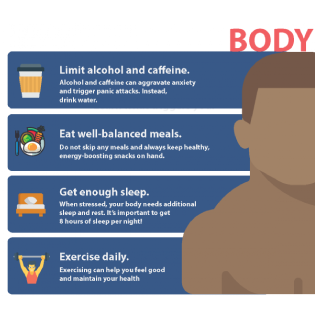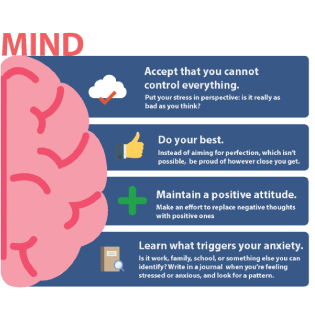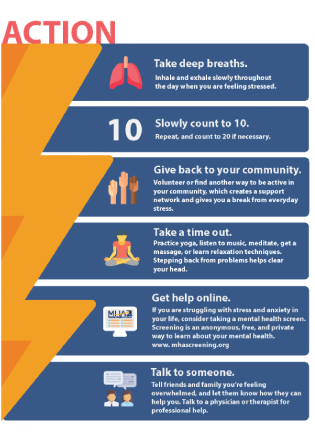Stress or Anxiety: The Differences & Symptoms
- Apr 3, 2019
- 3 min read
Updated: Sep 1, 2023

As many of you know, we help and treat a lot of people coping with anxiety related conditions. But did you know that over 40 million adults in the United States, age 18 and older, are affected by anxiety? That’s over 18% of the population or almost 1 out of every 5 people. With May being Mental Health Awareness Month, we wanted to shed some light on the difference between stress and anxiety, and also point out some signs to look for within your own lives and those around you.
STRESS VS. ANXIETY
While stress and anxiety are closely related, they are not the same thing. According to the Anxiety and Depression Association of America, stress is a response to a threat or external pressure in a situation. Whereas, anxiety is much more difficult to figure out. To explain further, when we are stressed, we usually know what we are stressed about and the symptoms surpass after the situation is over. With anxiety, people are more worried and fearful of things that could threaten them, and in some cases experience anxiety about the anxiety itself.
So how can you tell if you or a loved one are suffering from stress or anxiety?
SYMPTOMS OF STRESS
There are a number of emotional and physical disorders linked to stress, including depression, anxiety, heart attacks, strokes, gastrointestinal distress, obesity, and hypertension, to name a few. High levels of stress can wreak havoc on the mind and the body. While stress can manifest in many ways, it helps to know a few common symptoms:
Frequent headaches
Sleep disturbance
Back and/or neck pain
Feeling light-headed, faint, or dizzy
Sweaty palms or feet
Difficulty swallowing
Frequent illness
Irritability
Gastrointestinal problems
Excessive worry
Rapid heart rate
Muscle tension
Feeling overwhelmed
Having difficulty quieting the mind
Poor concentration
Forgetfulness
Low energy
Loss of sexual desire
SYMPTOMS OF GENERALIZED ANXIETY DISORDER
The defining feature of generalized anxiety disorder is excessive anxiety and worry (about a number of events or activities) occurring more days than not for at least six months. The intensity of the anxiety or worry is out of proportion to the actual likelihood or impact of the anticipated event or events. Other symptoms of generalized anxiety disorder include the following:
Difficulty controlling worry
Restlessness or feeling keyed up or on edge
Easily fatigued
Difficulty concentrating or mind going blank
Irritability
Muscle tension
Sleep disturbance
Exaggerated startle response
Psychosomatic symptoms: Headaches, stomachaches, dizziness, pins and needles
Physical symptoms: Shortness of breath, rapid heartbeat, excessive sweating, shortness of breath, chest pain
The anxiety, worry, or physical symptoms cause clinically significant distress or impairment in social, occupational, or other areas of functioning
DEALING WITH SRESS & ANXIETY
The effects of stress and anxiety can build up over time and lead to serious health risks. So, it’s important to take practical steps to manage your stress and reduce or prevent these effects. Below are some strategies from the Anxiety and Depression Association of American help you cope when feeling anxious or stressed.
WHEN TO SEEK HELP
If you or a loved one are having difficulty managing stress and it impedes your ability to carry out your normal daily activities (like getting to work on time), you should consider talking to a health professional. It’s important that you learn to identify your triggers and responses and find strategies that work for you. Should you have specific questions about stress or anxiety or want to setup a free consultation, call our office at (704) 752-8100 or request an appointment online.















Comments